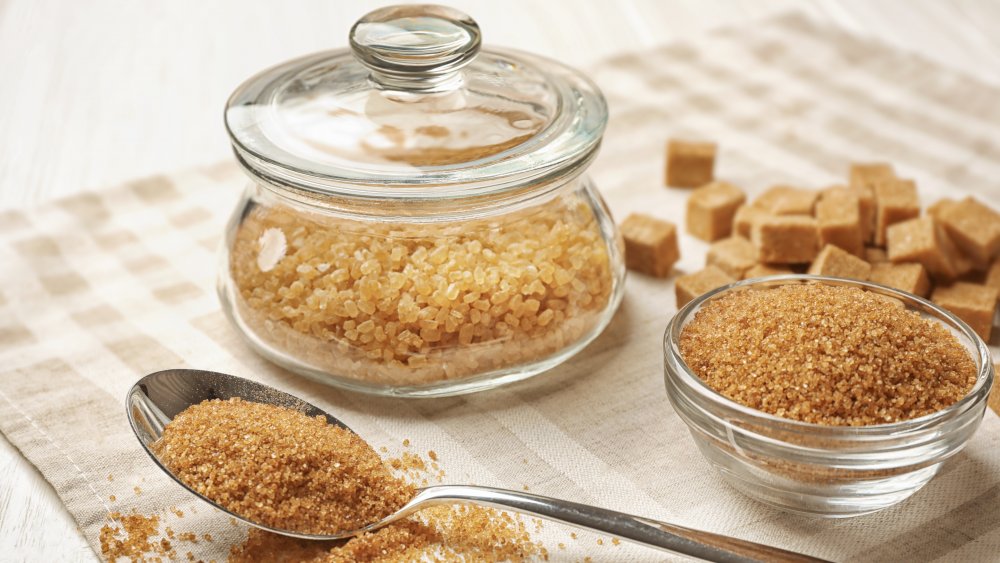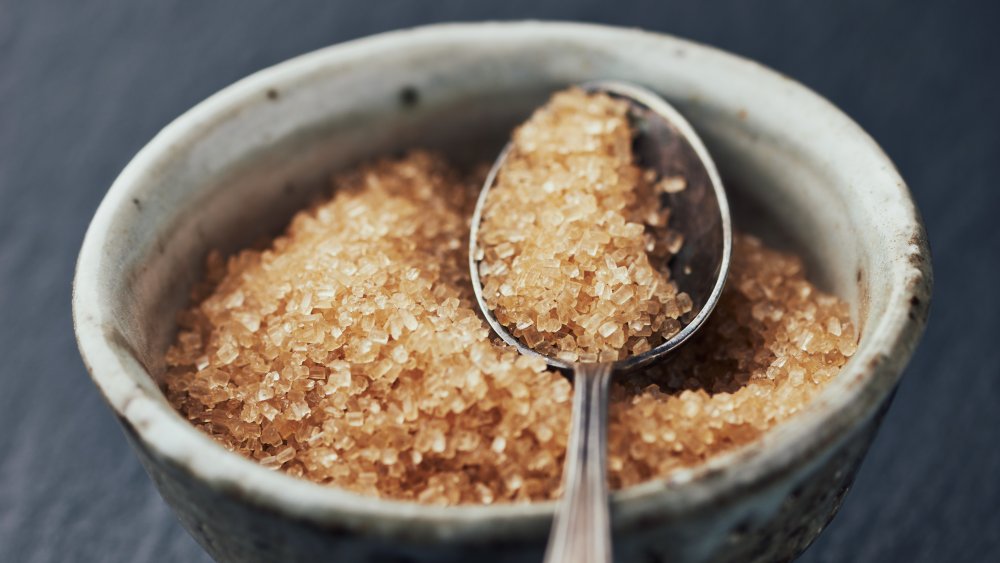The Real Difference Between Demerara Sugar And Brown Sugar
Although they might share a shelf in the baked goods aisle of the grocery store, Demerara sugar and brown sugar aren't quite the same although they tend to share a color.
Demerara sugar is a large-grain sugar which is produced from sugarcane (via Healthline). When used in cooking, its size and texture provide a crunch. In fact, if you're asking yourself whether you've had this type of sugar before, the answer is likely yes. If you've had a muffin, with a crunchy large-grain sugar on the top, it was probably Demerara. Its name comes from the former name of the South American country Guyana where it originated — Demerara.
Part of the reason it's brown is because it contains small amounts of molasses, which also helps impart a deep, earthy flavor to the sugar as well. Unlike white, refined sugar, Demerara is very minimally processed. As a result, it keeps some of the vitamins and minerals which naturally occur in the sugar cane.
The characteristics of brown sugar
Brown sugar, on the other hand, tends to be a mixture of white sugar (which can come from beets or sugar cane) and molasses (via Healthline). While brown sugar is slightly healthier than pure refined white sugar — it's slightly lower in calories since molasses has fewer calories than white sugar — the nutritional makeup isn't that difference since white sugar makes up a large portion of brown sugar. The addition of molasses explains why brown sugar tends to have a somewhat moist consistency (via Blue Flame Kitchen). As a result, it's easier to mix into doughs, for example, while Demerara sugar tends to keep its texture and form. Demerara sugar also has a deeper, darker flavor than that of brown because of its purity given that it's unadulterated, without the addition of any refined sugars.
If you're going to try and substitute one fo the other, you'll likely have more luck using Demerara in place of brown sugar. Sprinkling brown sugar on top of a pastry sounds... not so good.

